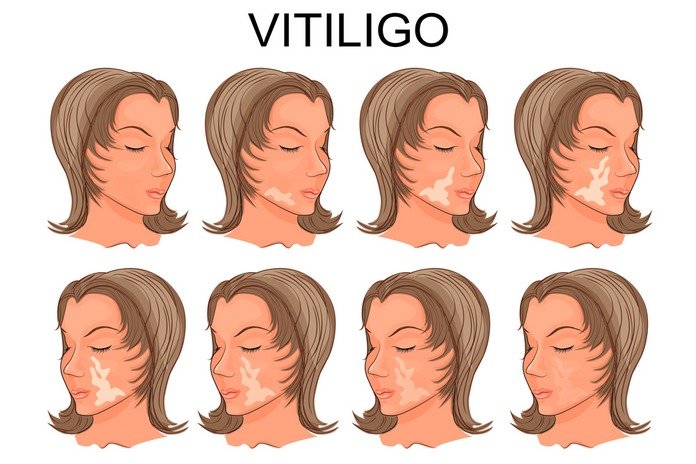Can Vitiligo Be Treated?

There is no treatment for vitiligo. Medical treatment aims to form a moderate skin tone by either removing the remaining color (depigmentation) or restoring color (re-pigmentation). Most occurring treatments consist of re-pigmentation therapy, camouflage, surgery, and light therapy. Counseling might also be suggested.
1- Re-pigmentation therapy
- Moderate vitamin D analogs
- Corticosteroids might be taken topically (as a cream to put on your skin) or orally (as a pill)
- Topical Immunomodulators like calcineurin inhibitors
- Outcomes might take more than 3 months. The healthcare provider will examine the patient for any kind of side effects that might consist of striae (stretch marks) or skin thinning if used for a long time
2- Camouflage therapy
- Utilizing sunscreen having an SPF of 30 or more. Also, the sunscreen must protect against ultraviolet A light and ultraviolet B light (UVA and UVB). The use of sunscreens reduces tanning, thereby lowering the contrast between normal and affected skin.
- Hair dyes if vitiligo might affect the hair
- Makeup aids in camouflaging depigmented parts. One quite known brand is Dermablend
- Depigmentation therapy with the medication monobenzone might be useful if the disease is huge. This drug is applied to the skin of pigmented patches and will convert them to white to match the parts of vitiligo.
3- Light therapy
- Combining UVA (PUVA) and oral psoralen is used to cure large skin areas with vitiligo. This treatment is more likely effective for individuals having vitiligo in areas of the trunk, head, legs, upper arms, and neck
- Excimer laser releases a wavelength of ultraviolet light close to that of a small band UVB. This is efficient for patients who do not have large or widespread lesions since it is done in a small effective area
- Narrowband ultraviolet B (NB-UVB) needs two to three sessions of treatment per week for various months
4- Surgery
- Micropigmentation: A kind of tattooing that is normally applied on the lips of people that are affected by vitiligo
- Autologous (from the patient) skin grafts: Skin is taken from each part of the patient and used to cover the other part. Possible problems consist of infection, scarring, or a failure to re-pigment. This may also be known as mini grafting
5- Counseling
Vitiligo might give rise to psychological distress and consist of the ability to impact an individual’s social interactions and outlook. If this occurs, your caregiver might recommend that you look for a counselor or join a support group
However, the treatments for vitiligo rely on changing the skin’s appearance by restoring its color. Therefore, the impact of treatment is not normally permanent, and it cannot control the extension of the condition and its spread always. A GP might suggest:
- A referral for camouflage creams
- Sun safety
- A topical steroid (an ointment or a cream that consists of asteroid)
Further treatment might not be important, if, for instance, you only have a small area of vitiligo or your natural color of the skin is very light. (9)
